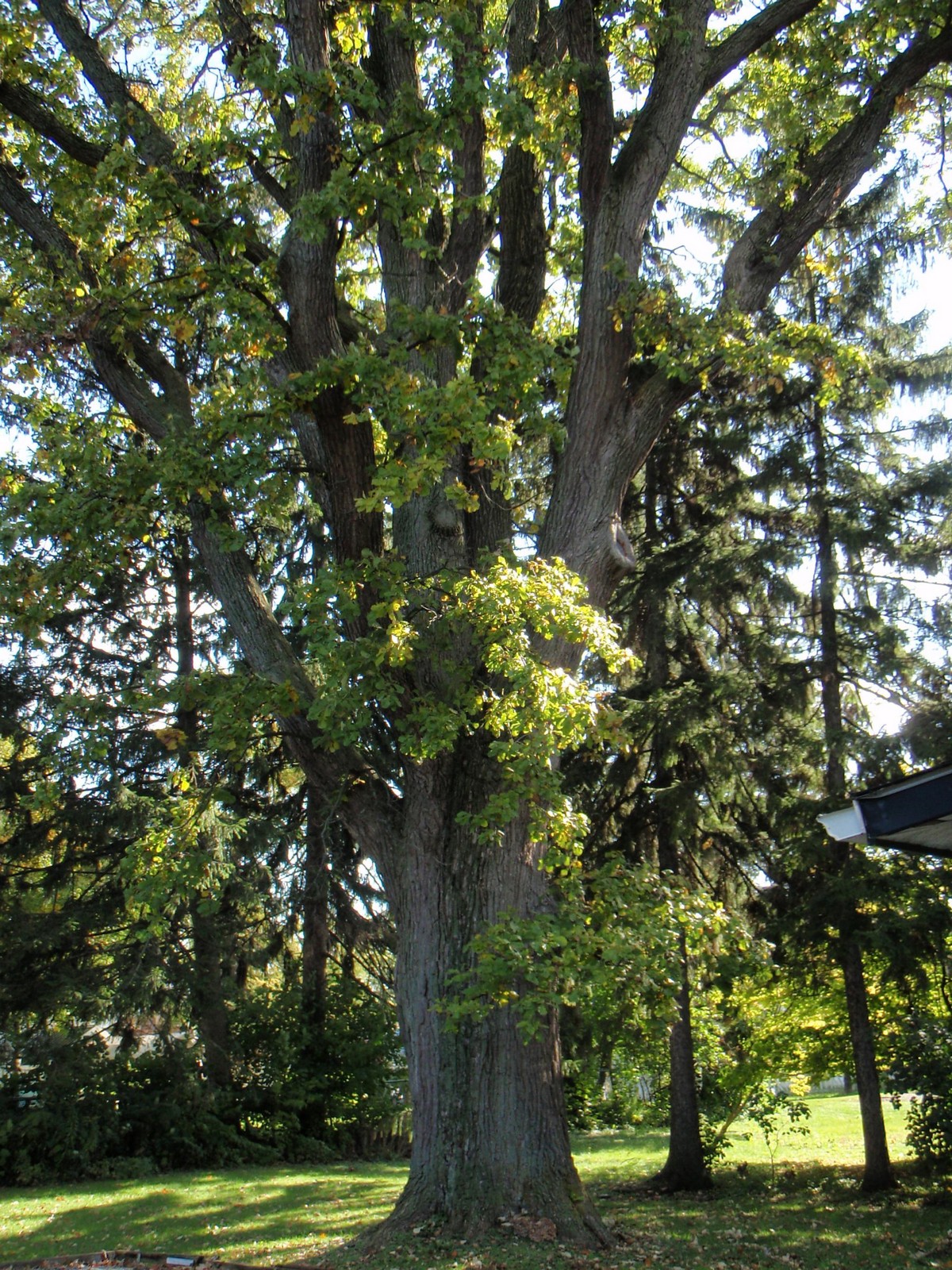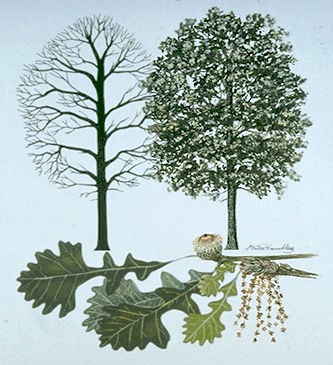Quercus macrocarpa
Owner: Anne Burns
Nominator: Anne Burns
Height: 29.1 m (95.5 ft)
Diameter: 156.43 cm (61.6 in)
Circumference: 491.2 cm (193.4 in)
Description
The Bur Oak is also known as the ‘Mossy cup oak’, which describes its hairy-cupped acorn. Acorns of the Bur oak are the largest of our indigenous oaks at 2-5 cm long. The cup is scaly and fringed with many stiff hair-like projections, and the white kernel inside is sweet and edible and a favourite among many forest animals including squirrels and deer. Good seed crops occur every 2 to 3 years. A member of the white oak group, the Bur oak’s leaf margins are rounded. The leaves are the largest of all the oak leaves, 15-30 cm long in variety of shapes, though Bur oak leaves can be distinguished by being wider at the top and tapering toward the base. It does hybridize easily with other white oak species, which explains the wide range of leaf shape of Bur oaks. This hybridization also allows it to grow well and adapt to a wide range of soil types and climates. It is the most drought-resistant of all the oaks so is able to withstand periodic dry conditions or sites that are typically dry. Associated forest cover includes hickories, sugar maple, white ash, white elm, basswood, and white, red and black oaks. Its wood is often sold as white oak because it is very similar, and like white oak, is valued for its beauty and strength. (Source: Focus on Forests)
(Source: The Canadian Encyclopedia)


